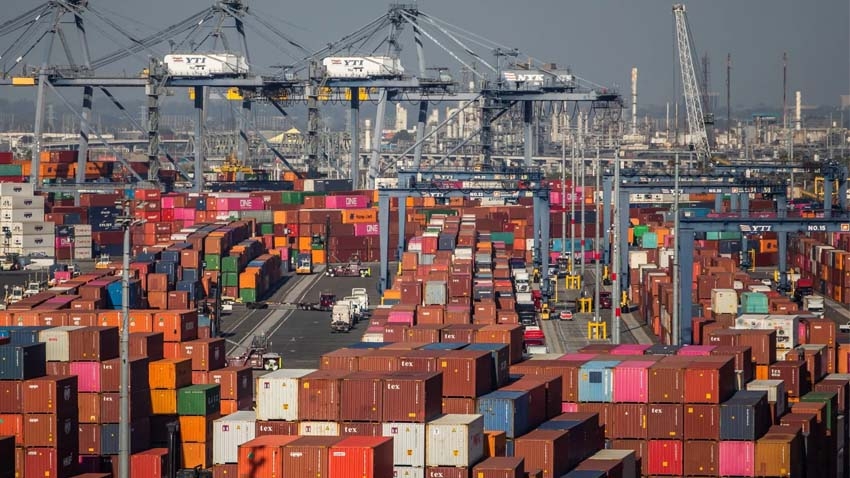Published: 02:13 PM, 16 November 2025
China's Deadly Supply Chain
 AFP Image
AFP Image
China’s factory floors remain a glaring contradiction: engines of global supply and profit, but too often crucibles of unsafe conditions, excessive hours and constrained freedom for the hundreds of millions who make the country’s exports possible. The data are stark. China’s own National Bureau of Statistics recorded roughly 300 million migrant workers in 2024 — 299.73 million people who leave their home villages to staff factories, construction sites and service jobs — and the bureau also reported that employees of enterprises worked an average of 49.0 hours per week in 2024. Put differently, while statutory limits and recent tweaks to the holiday calendar modestly changed the letter of the law, the lived reality for many workers is a week well above the intended 40-hour norm and far more exposure to overtime that, in practice, goes unpaid or underpaid. That gap between law and practice is not an abstract failing; it is an economic design choice that externalizes costs onto workers and, by extension, onto the global brands that profit from China’s low-cost production model.
Occupational safety statistics expose a related human toll. In 2024 Chinese authorities recorded thousands of safety incidents and nearly 20,000 deaths in workplace safety accidents; the May 2025 chemical plant explosion in Shandong that killed at least five people and injured 19 is the most recent in a long series of industrial tragedies that make visible the systemic shortfall in safety oversight and enforcement. Government statements touting year-on-year declines in accident rates do not negate the scale of harm: declines from a high baseline still leave millions exposed to dangerous conditions, and official improvements often reflect administrative drives rather than systemic transformation. These recurring disasters reveal weak compliance incentives, thin regulatory enforcement, and corporate prioritization of throughput over human life — a calculus that keeps production costs low but transfers risk and suffering to workers.
The persistence of long hours and hazardous workplaces is closely tied to the economic position of migrant workers. Millions migrate to cities without robust social protections, housing security, or equal access to public services; their bargaining power is limited, and employers exploit that imbalance. Independent organizations and worker-rights monitors repeatedly document coercive practices, denial of proper contracts, withheld wages, and retaliatory discipline when workers complain. In supply chains — from electronics and apparel to food processing — these labor violations are not occasional lapses but structural features that allow brands to maintain razor-thin margins. Reports documenting “coffee laundering,” abusive subcontracting, and precarious conditions in factories supplying major multinational brands show how complex logistics and multi-tier sourcing deliberately obscure where goods are made and by whom, frustrating remediation and accountability.
Forced-labor risks in particular have leapt into the spotlight because of China’s policies in Xinjiang and the ways material supply chains blend regional inputs into nationwide outputs. Investigations by major rights groups and subsequent actions by Western regulators have established plausible links between forced labor programs and inputs used in global manufacturing — notably aluminum and associated auto parts. Governments and agencies have responded: import bans, restrictions, and supply-chain due-diligence requirements now make it more difficult for companies to credibly claim ignorance. Yet many global manufacturers and trading intermediaries continue to source from opaque networks where monitoring is limited, subcontracting is dense, and the commercial logic favors speed and cost over verification. The result is a global marketplace that tolerates human-rights risk so long as it preserves low prices for consumers and high returns for shareholders.
Legal reforms and public pronouncements from Beijing have offered hopeful but limited remedies. The state has adjusted holiday rules and clarified working-hours calculations, and regulators occasionally call out companies for “overwork culture” in high-profile campaigns. Some large firms have publicly adopted clock-off policies and curtailed extreme overtime in response to reputational and regulatory pressure. But policy changes at the top are not the same as enforcement on the ground: local officials, incentivized by employment and growth metrics, often prioritize output, and penalties for violations are frequently smaller than the profits gained by skirting safety or overtime rules. The combination of weak penalties, fragmented enforcement, and powerful supply-chain buyers creates a persistent incentive for factories to overwork and under-protect their labour force.
This is not merely a problem of Chinese domestic governance; it is a global governance failure in which multinational companies, trade partners, and consumers share responsibility. Brands contract through layers of suppliers and rarely map the full footprint of where components are made, allowing abuses to be hidden in lower tiers. Where audits exist, they are often announced, scheduled, and narrowly framed, limiting their ability to find systemic abuses. When independent monitors publish exposés, companies frequently issue ritual commitments to “investigate” or “improve” without transparent timelines, binding remediation plans, or compensation for harmed workers. In effect, the global economy subsidizes labor exploitation by accepting an opaque supply chain as the price of affordable goods.
Data-driven pressure points make clear remedies possible: enforceable supply-chain transparency laws, mandatory corporate due diligence with civil liabilities for noncompliance, credible independent inspections, and social protections that reduce workers’ vulnerability — such as portable benefits, stronger contract enforcement and genuine freedom of association. Without these, incremental tweaks to holiday calendars or headline crackdowns on the “996” culture will ring hollow for the millions who still toil in hazardous conditions and under crushing schedules. Reform must also address the underlying business model: buyers must internalize the true cost of production rather than externalizing it onto the backs of migrant workers.
China’s economic model has delivered decades of rapid industrialization and lifted many out of poverty, but its success has been partly bought with an exploitative labor bargain that should no longer be acceptable to international partners or multinationals profiting from Chinese production. The figures are unambiguous: nearly 300 million migrant workers, an average enterprise workweek approaching 49 hours, and thousands of preventable deaths and injuries each year. Those numbers should galvanize far more than rhetorical reforms; they demand binding accountability from factories, suppliers and global buyers, and a concerted push to make decent work the foundation of competitive advantage rather than its casualty. (By, Journalist Delwar Hossain)



